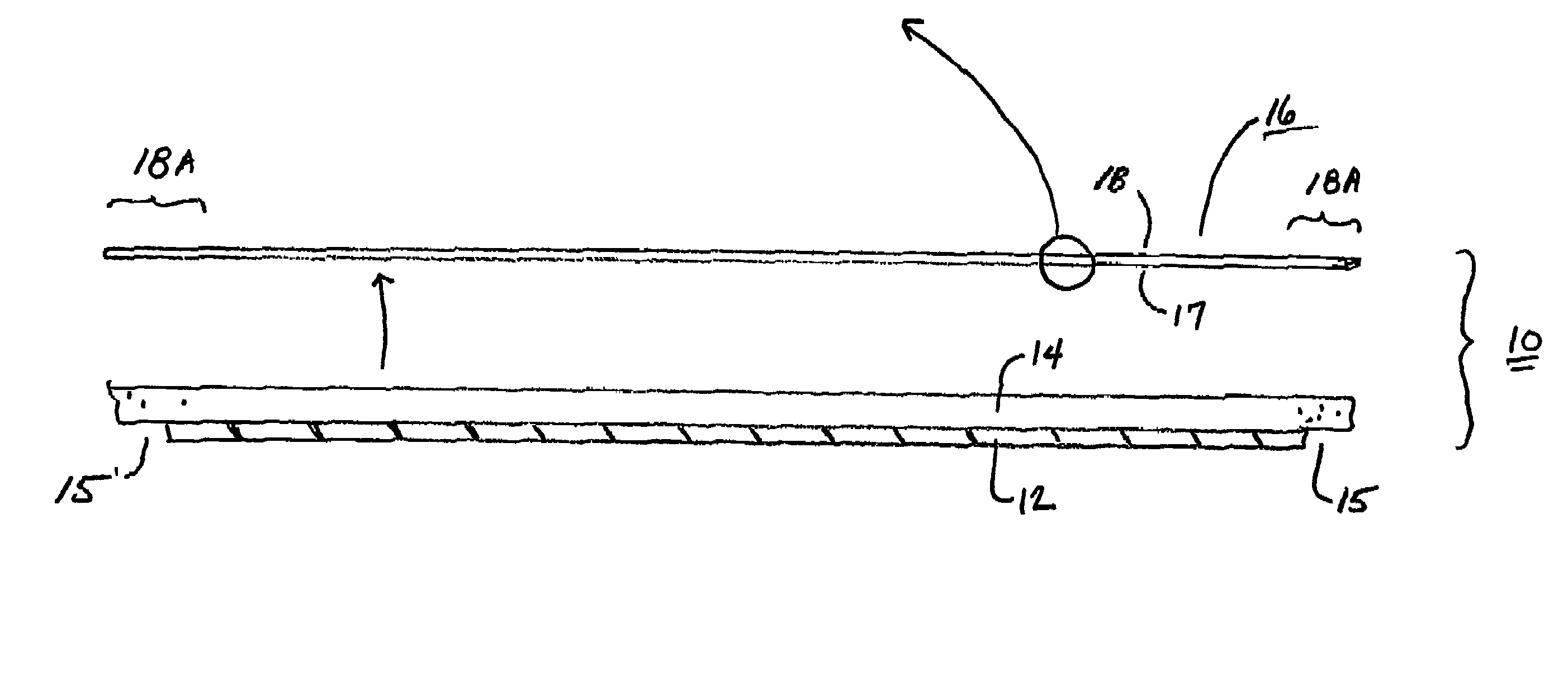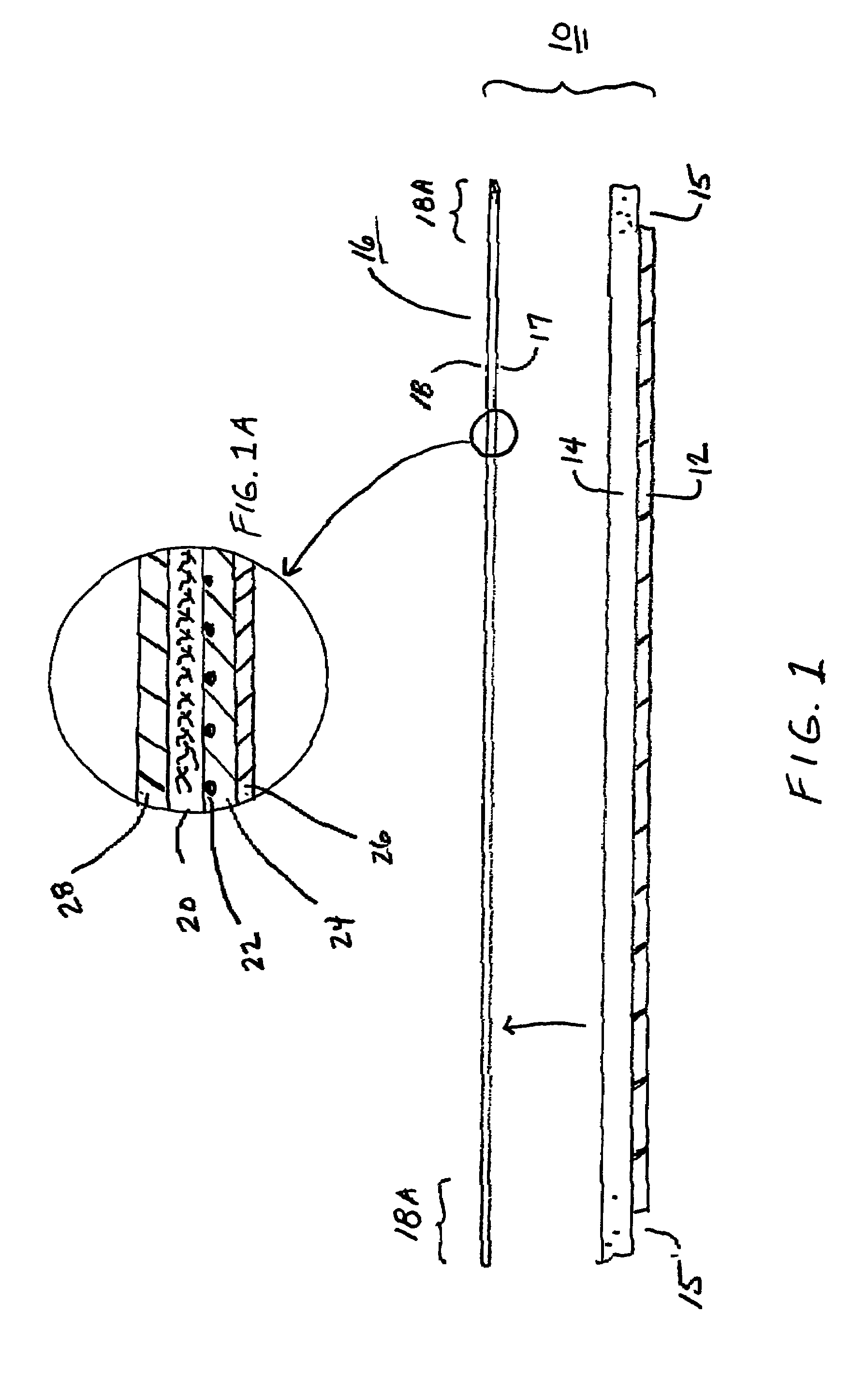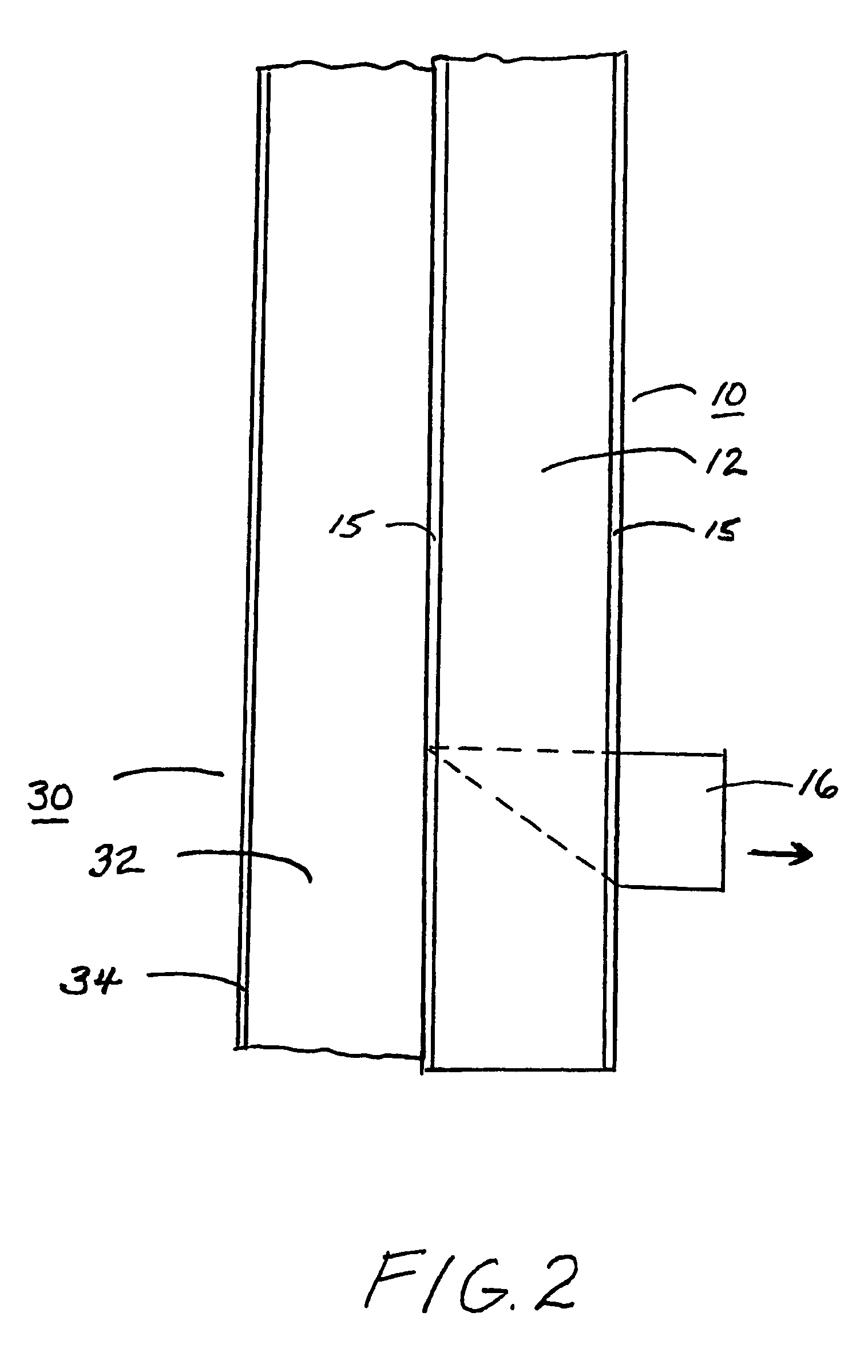Moisture barrier membrane with tearable release liner composite
a technology of release liner and membrane, which is applied in the direction of film/foil adhesives, synthetic resin layered products, building components, etc., can solve the problems of difficulty in locating cutting strings at the job site, difficulty in locating cutting strings, and undesirable tape use, so as to achieve greater economic and ecological advantages, thin paper sheets, and the effect of thin cutting strings
- Summary
- Abstract
- Description
- Claims
- Application Information
AI Technical Summary
Benefits of technology
Problems solved by technology
Method used
Image
Examples
Embodiment Construction
[0021]The term “moisture barrier” includes sheet materials, such as felts, spunbonded materials (e.g., polypropylene), plastic and / or metal films, and the like which are customarily used in the building trade for house wrap or waterproofing. Also included are waterproofing membranes having a continuous “pre-formed” pressure-sensitive waterproof (or “waterproofing”) adhesive layer that, in contrast to hot-applied mastic compositions, retains its layer shape in ambient temperatures and is operative to adhere to building surfaces (e.g., foundations, decks) and civil engineering structures (e.g., pipes, bridges, tunnels, etc.).
[0022]FIG. 1 is a partially exploded cross-sectional view of an exemplary moisture barrier membrane laminate 10 of the present invention comprising a carrier support 12, a waterproof and waterproofing adhesive 14, and a release liner composite 16.
[0023]Preferably, the waterproofing adhesive 14 may directly contact or be contiguous with the carrier support 12, but ...
PUM
| Property | Measurement | Unit |
|---|---|---|
| thickness | aaaaa | aaaaa |
| thickness | aaaaa | aaaaa |
| thickness | aaaaa | aaaaa |
Abstract
Description
Claims
Application Information
 Login to View More
Login to View More - R&D
- Intellectual Property
- Life Sciences
- Materials
- Tech Scout
- Unparalleled Data Quality
- Higher Quality Content
- 60% Fewer Hallucinations
Browse by: Latest US Patents, China's latest patents, Technical Efficacy Thesaurus, Application Domain, Technology Topic, Popular Technical Reports.
© 2025 PatSnap. All rights reserved.Legal|Privacy policy|Modern Slavery Act Transparency Statement|Sitemap|About US| Contact US: help@patsnap.com



